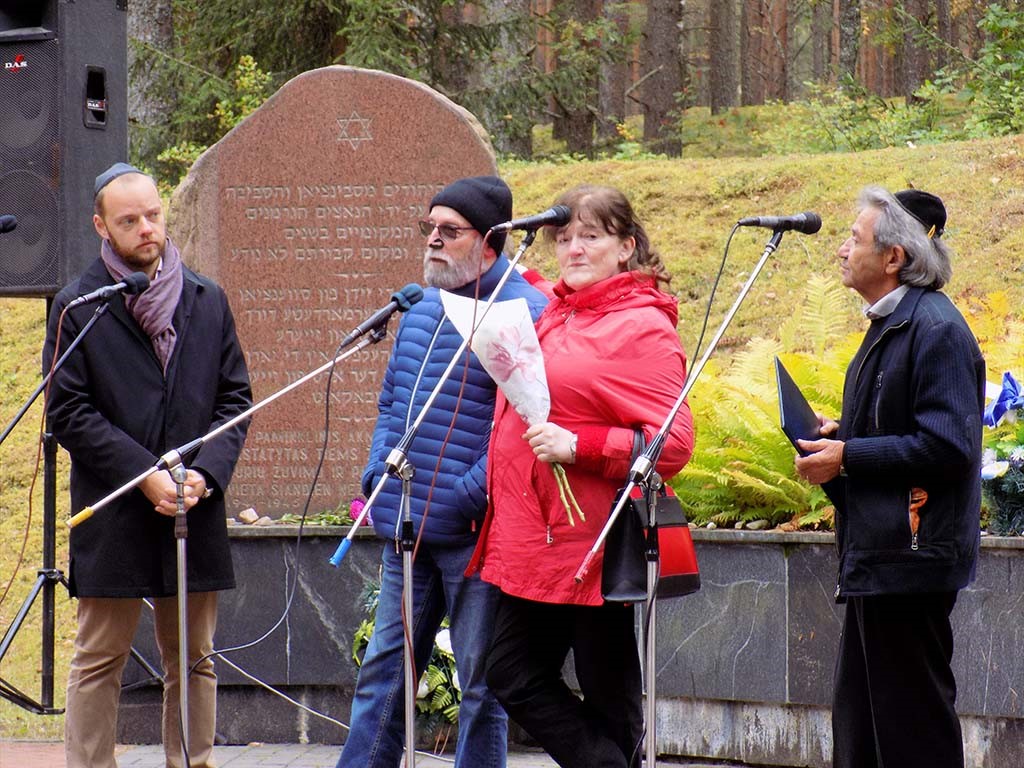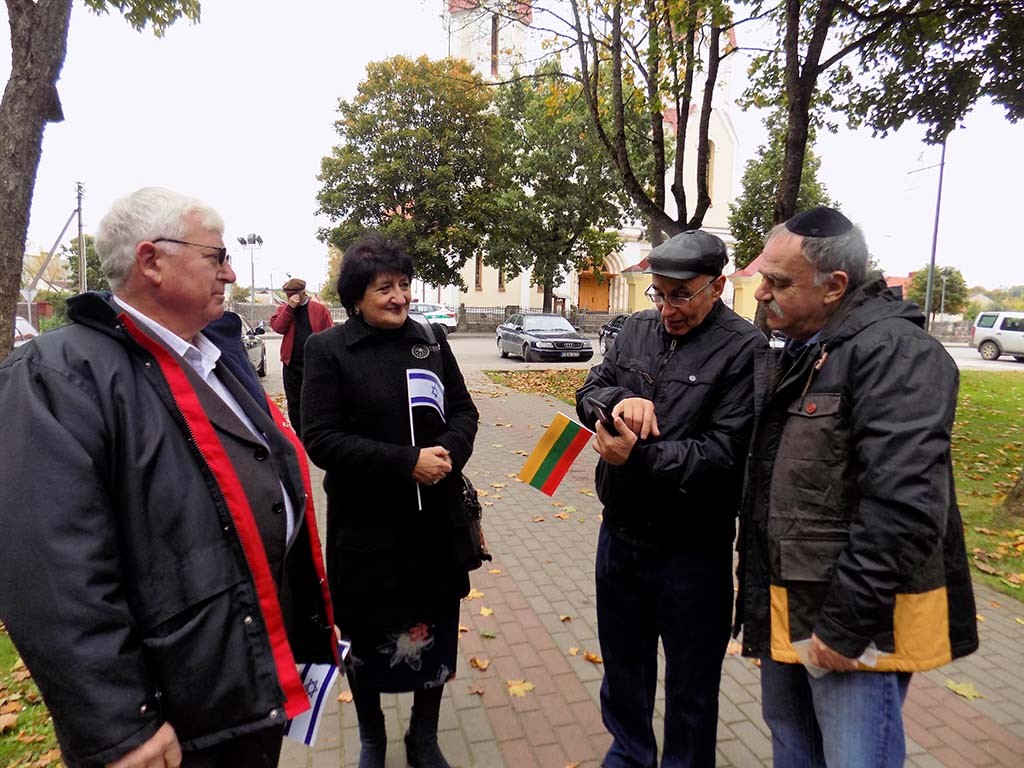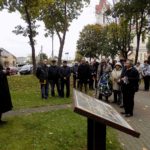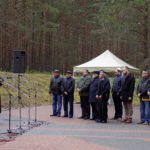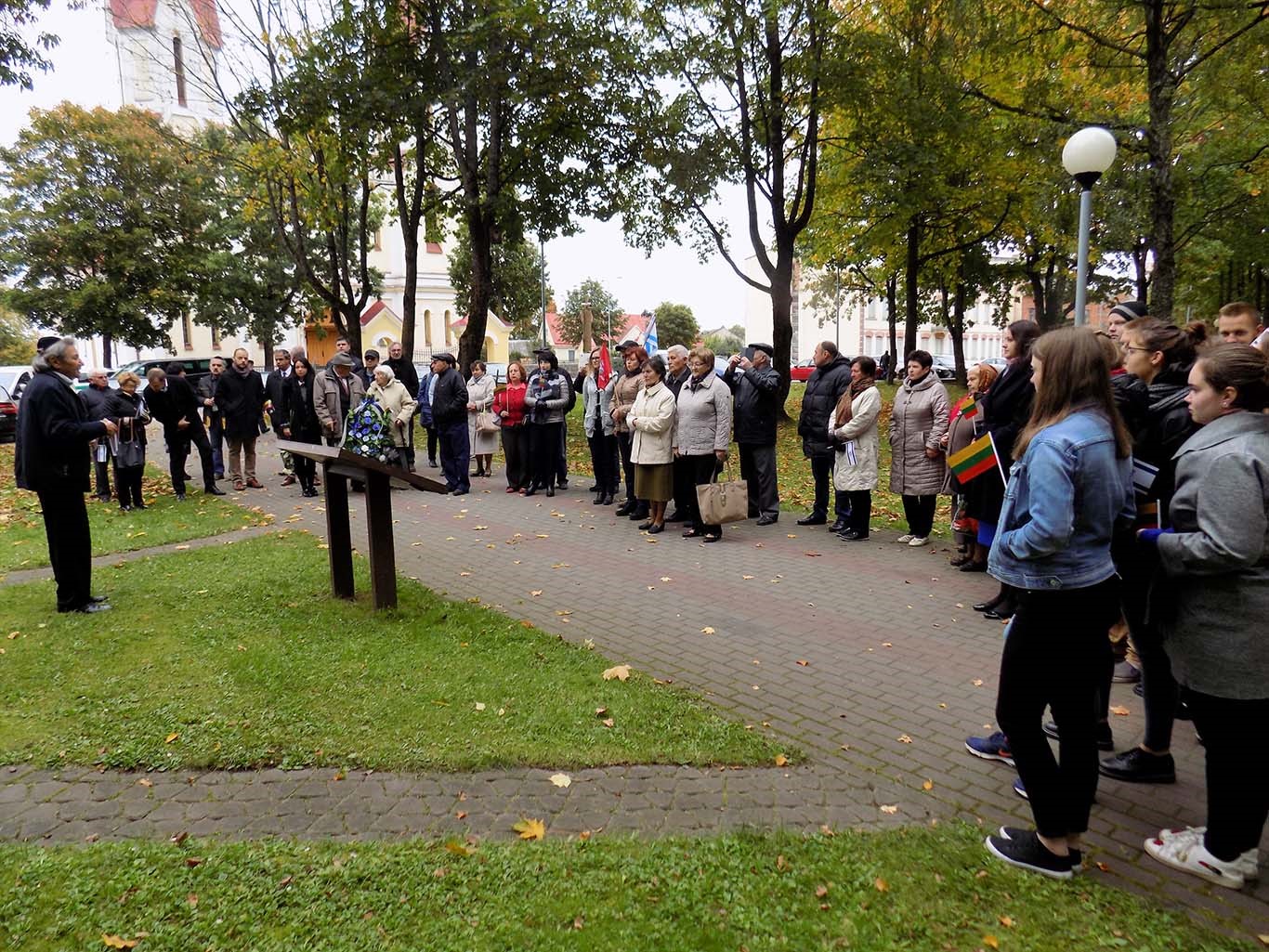
by Galina Romanova
It almost seems as if nothing new can be said about a long-standing Jewish tradition to meet on the first Sunday in October by the Menorah sculpture in the central park in Švenčionys, Lithuania and at the obelisk people call the Polygon in the forest between Platumai village and Šalnaitis Lake, where 8,000 Jews from the entire Vilnius region were brutally murdered and buried. It almost seems that way, but every meeting is different in its own way. This year, on October 1, there was a prevailing spirit of real and sincere communication, just as there is every year, and the people who come here often end up becoming long-term friends, or at least get to know one another much better. Those who come bring with them photographs and souvenirs from different times.
The course of the meeting was traditional. Švenčionys Jewish Community chairman Moisej Šapiro opened the meeting at the Menorah sculpture, Nalšia Museum historian Nadežda Spiridovienė provided a brief overview of the history of the Jewish community in the region. As usual wreaths were laid at the base of the monument, and as usual pride-of-place went to the “Last Mohican,” Moisej Preis, a prisoner at two concentration camps who laid the first wreath. Frequent guest in the Švenčionys region Israeli ambassador to Lithuania Amir Maimon lit the candles and Shmuel Yatom, the cantor at the Choral Synagogue in Vilnius, read a prayer.

After the traditional and annual ritual all were invited to the memorial in nearby Švenčionėliai, Lithuania. Švenčionys regional administrator Rimantas Klipčius, present from the beginning at both ceremonies, gave the first speech here. He expressed sympathy for all who lost family members and friends at the mass grave site. He called for re-creating those historical events and the close relationships between people, and to pass this on to children. The head of the regional administration also briefly discussed what has been done and is being done in that regard.
Ambassador Amir Maimon among other things offered some slight criticism. He said he’s been working in Lithuania for two years now and has been to the Polygon monument twice now. He has concluded the worst perpetrators were local residents. Lithuanian Jewish Community chairwoman Faina Kukliansky continued the thought, saying that while the Holocaust is most often associated with the war, in fact neighbors killed neighbors for property, which she didn’t think should properly be considered war, but rather criminal activity and banditry. She added she wasn’t accusing anyone present at the ceremony, nor the local, mainly Polish population around Švenčionys in general. She also praised the Švenčionys region as unique in Lithuania for being the location where the public still turns out en mass to remember the Jews who were murdered. She said this had a lot to do with chairman Šapiro’s efforts.
There were other tragic, heart-warming and moving stories by other Jews present. Chairman Šapiro spoke as well of an exceptional meeting he had with the makers of the film “Paskutinis rugpjūčio sekmadienis” [Last Sunday in August]. The film tells the story of the mass murder of Jews in the Molėtai region of Lithuania, and Šapiro said the film has no equal. He said anyone who hadn’t seen it yet should find it on the internet and watch it.
Švenčionys regional administration Department of Culture, Education, Youth and Sports director Teresa Sansevičienė also spoke. Regional administration board member Darius Velička participated as well, as did several other board members and people from the local government as well as the public.
Chairman Šapiro made a point of singling out all those who attended, mentioning them by name and thanking them, especially those who had traveled from abroad, including Velga-Vilnius general director Juzef Fyedorovich, who made the trip back to his home country and home region. Besides all the other good things he has done for the region, he’s also become a major sponsor of Jewish events and of the local Jewish community.
Photographs by author

